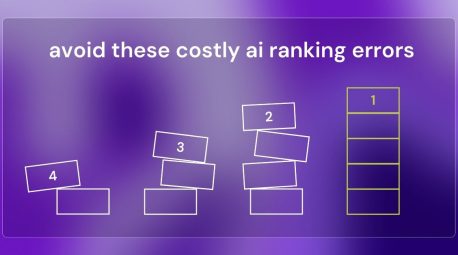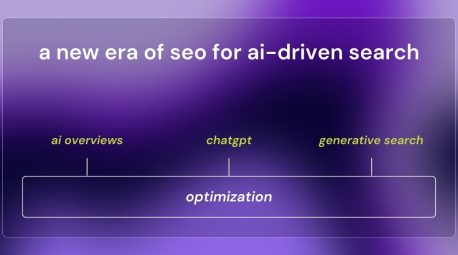Top Mistakes Businesses Make When Trying to Rank in AI Search Results

AI-driven search results are rewriting the rules of online visibility. While traditional SEO best practices still matter, getting cited inside Google AI Overviews, ChatGPT answers, and Perplexity results requires a different playbook. Unfortunately, many brands are sabotaging themselves by making avoidable mistakes.
This article breaks down the most common AI search pitfalls — and how to fix them before your competitors take the lead.
Mistake 1: Treating AI Optimization Like Traditional SEO
Many marketers assume that ranking well in Google’s SERPs will automatically mean visibility in AI-generated results. Not true. AI search tools don’t simply scrape the top 10 Google results — they synthesize information from a variety of trusted, structured, and contextually relevant sources.
Instead of just focusing on keyword rankings, you need to:
- Optimize for entity recognition (clear definitions of who you are and what you do).
- Structure your content for AI parsing.
- Provide factual, verifiable information that AI can confidently cite.
Mistake 2: Ignoring AI Visibility Audits
If you don’t measure, you can’t improve. Many brands never check whether their content appears in AI-generated answers. Without that insight, you’re flying blind.
Conduct regular audits by running your target queries in platforms like Google AI Overviews, ChatGPT, and Perplexity. Note:
- If you appear at all (and for which queries).
- Which competitors are cited instead — and why.
- Patterns in the types of content AI prefers for those queries.
Use this data to identify gaps in your approach and opportunities to reposition your content.
Mistake 3: Publishing Unstructured, “Wall of Text” Content
AI models thrive on content they can quickly understand and segment. Long, unbroken paragraphs make it harder for them to identify key points.
To fix this:
- Use H2 and H3 headers that match search intent.
- Include FAQs, lists, and tables alongside narrative explanations.
- Keep key answers short and precise — then expand with context for humans.
This approach ensures your content serves both readers and AI engines.
Mistake 4: Neglecting Authoritativeness & Citations
AI search platforms prefer citing brands they trust. If your content is thin, outdated, or lacks credible backing, it will get skipped for more authoritative sources.
Build credibility by:
- Publishing original research, case studies, or survey results.
- Earning backlinks from respected industry sources.
- Maintaining detailed author bios with verifiable expertise.
Over time, this positions your brand as the “go-to” source in your niche.
Mistake 5: Failing to Update Content for AI Relevance
AI search tools evolve faster than traditional search algorithms. Content that worked six months ago might no longer be favored by the latest AI models.
Schedule quarterly content reviews to:
- Refresh statistics and data points.
- Improve clarity and structure for AI parsing.
- Add new insights or angles that make your content stand out.
This keeps your material competitive and prevents slow erosion of your AI visibility.
Mistake 6: Overlooking Generative Search Engines Beyond Google
Many brands hyper-focus on Google AI Overviews and forget that platforms like ChatGPT, Perplexity, and Bing Chat are also pulling huge traffic shares. Each platform has its own way of sourcing and presenting content.
Audit and optimize for multiple AI platforms, not just one. This diversification spreads your visibility risk and broadens your reach.
Mistake 7: Chasing AI “Hacks” Instead of Long-Term Strategy
The temptation to find quick tricks for AI rankings is strong, but these methods rarely survive platform updates. AI visibility is built on trust, clarity, and authority — not gimmicks.
Focus on sustainable strategies:
- Strong SEO foundations.
- AI-friendly content structure.
- Consistent authority-building.
This ensures your visibility lasts through every algorithm shift.
Final Takeaway
Ranking in AI search results isn’t about replacing SEO — it’s about evolving it. Avoiding these mistakes and focusing on authority, structure, and visibility audits will keep your brand relevant in a rapidly changing search landscape.
If you don’t adapt, your competitors will. But with a smart AI optimization strategy, you can claim your space in the answers of the future.
FAQs
- Is AI optimization harder than traditional SEO?
Not necessarily — but it requires different tactics and more frequent updates. - Can I skip SEO if I focus on AI search?
No. Without SEO’s authority signals, your AI rankings will suffer. - How quickly can I see results from AI optimization?
Some changes can show up within weeks, but building authority is a long-term process. - Do AI platforms show the same results to everyone?
No — AI responses can vary based on context, personalization, and model updates. - How often should I audit my AI visibility?
Every 2–3 months is recommended to stay ahead of shifts in AI sourcing behavior.


